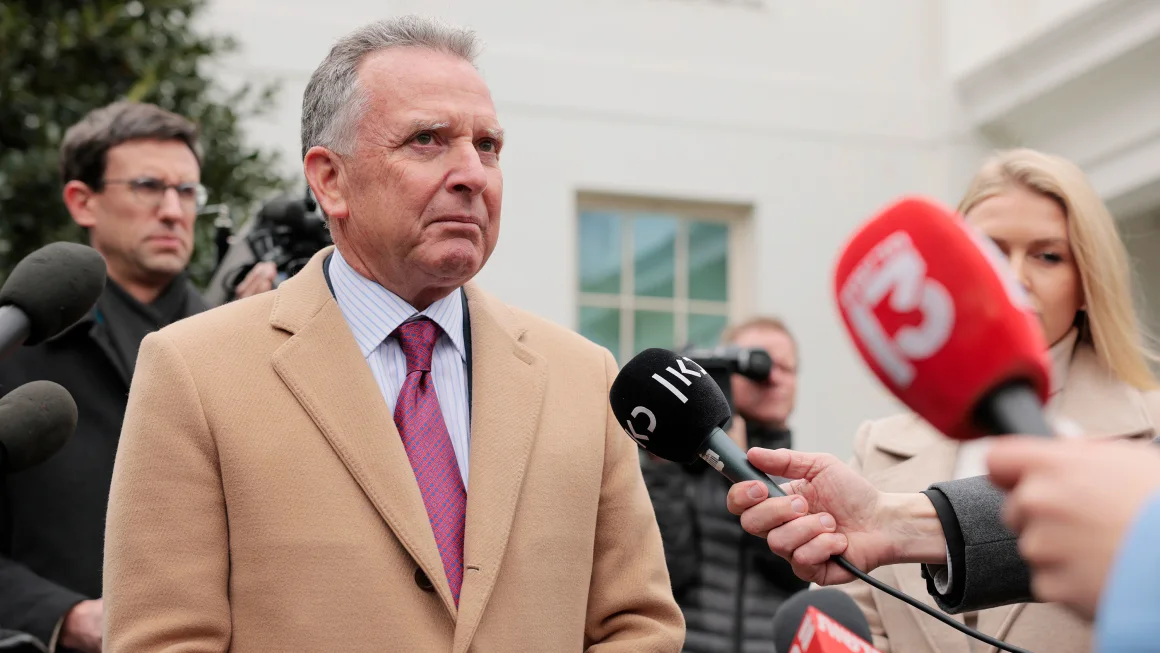Iran and the United States commenced high-stakes negotiations on Saturday to reach a new nuclear agreement, as tensions between the two nations escalated with mutual warnings.
President Donald Trump issued a stern ultimatum, threatening military strikes should the talks fail, while Tehran cautioned that any attack on its territory would pull the U.S. into a wider Middle Eastern conflict.
The talks, set in the Gulf Arab nation of Oman, may mark the first direct engagement between Iranian and American officials in over a decade. However, Iranian authorities maintain that the discussions will be indirect, mediated by third parties acting as intermediaries.
According to Iran’s state news agency IRNA, a delegation led by Foreign Minister Abbas Araghchi arrived in the Omani capital of Muscat on Saturday morning.
President Trump has imposed a two-month deadline for Iran to agree to terms that would significantly reduce or eliminate its nuclear program.
“I want them not to have a nuclear weapon. I want Iran to be a wonderful, great, happy country, but they can’t have a nuclear weapon,” Trump said aboard Air Force One en route to Florida on Friday night.
The negotiations take place at a time when Iran’s regional influence has waned. Over the past 18 months, the Islamic Republic has suffered from Israeli strikes targeting its regional proxies, the ousting of Bashar al-Assad in Syria, and rare internal attacks within its own borders.
With tensions high, Trump reiterated the potential for military intervention if a deal is not reached, suggesting Israel would lead any such action.
“If it requires military, we’re going to have military,” Trump said on Wednesday. “Israel will obviously be very much involved in that. They’ll be the leader of that.”
Iran has consistently rejected negotiations conducted under pressure. On Friday, the semi-state Tasnim news agency reported that Iranian officials had outlined their “red lines” ahead of the talks, including a rejection of “threatening” language and “excessive demands” regarding its nuclear and defense programs—likely referencing Tehran’s ballistic missile arsenal, which is seen by U.S. allies in the region as a significant threat.
Adding complexity to the negotiations is the involvement of Trump administration Middle East envoy Steve Witkoff, who joins the talks following a face-to-face meeting with Russian President Vladimir Putin in St. Petersburg on the Ukraine crisis.
Though the specific agenda for the Muscat talks remains unclear, President Trump has pledged to secure a more comprehensive agreement than the 2015 Joint Comprehensive Plan of Action (JCPOA), brokered under President Obama. Trump withdrew the U.S. from that deal in 2018, criticizing it as a “disastrous” pact that funneled resources to a regime he accused of sponsoring terrorism.
Trump’s administration has yet to specify how the proposed deal would differ from the JCPOA, though officials have hinted at seeking a full dismantlement of Iran’s nuclear infrastructure, including its civilian energy program—a right granted under international nuclear treaties.
Iranian officials have strongly rejected that proposition, accusing the U.S. of using nuclear demands as a pretext to weaken or overthrow the Islamic Republic. Analysts suggest that Tehran views its nuclear program as a vital strategic asset, and abandoning it would strip the country of key leverage.
A senior U.S. administration official noted that the upcoming discussions may go beyond nuclear issues.
“Iran would be eager to jump back into something like JCPOA, so the question is: are they willing to put anything else on the table?” the official said.
The Saturday meeting is expected to test whether Tehran is open to broad-based dialogue that could eventually address its nuclear program, ballistic missile development, and regional proxy networks.





